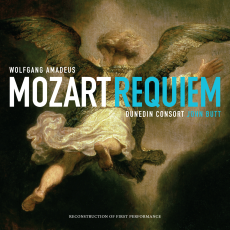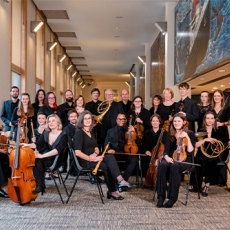Dunedin Consort - Mozart: Requiem - BachTrack.com (LIVE REVIEW)
Since reading Stravinsky's assertion (in Poetics of Music) that "The more constraint one imposes, the more one frees oneself from the chains that shackle the spirit", this paradox has fascinated me. The "one" in the case of the 1779Vespeare solennes de Confessore, was Archbishop Colleredo of Salzburg; the beneficiary of the constraint was the 23-year-old Mozart, ordered to temper artistic impulse in the service of liturgy. The Dunedin Consort joyously inhabited the space created by Mozart's skilful navigation between the spirit and letter of the law in this Lammermuir Festival concert.
Operatic rather than liturgical joy illuminated the opening Dixit Dominus as the twelve-strong chorus, whose power belied its number, sang of "the beauties of holiness from the womb of the morning". Is it ironic that the lion's share of solo interest in Beatus vir ("Blessed is the man") goes to a female soprano? In this case any such irony was swept away by the authoritative and expressive Joanne Lunn, who later shone in the Laudate Dominum. The chorus squeezed maximum drama from the closing line of the Beatus Vir, which sets with astonishing freshness the same timeless text ("as it was in the beginning...") as that which ends the other five movements. Live music being as much a visual as an audio event, we in the audience could thank double bassist Robert Franenberg for highlighting a surely forbidden hint of dance, particularly in the fugal Laudate pueri. Being the most visible for standing beside this tallest of instruments, his committed performance seemed to embody the Dunedin Consort's infectious vitality.
Jonathan Manson, the soloist in C.P.E. Bach's 1753 Cello Concerto in A major, did not emerge from, and repair to, a green room, but from within the orchestra. During one of live music's touchingly human incidents (a slightly delaying mislaid viola part), one could see how relaxed Manson was. These few moments allowed Dunedin director John Butt to provide valuable improvised background detail on the the work's composer who, we discovered, was one of the first musicians to consort with the intelligentsia of his day. This erosion of servant status, later entirely rejected by Mozart, chimed with the work's enchanting mixture of gestures, in which the momentum of Baroque sequences contrasted with constantly changing classical phrases. Manson wore his virtuosity lightly, which suited the work nicely. In this winning mix of old and new performance practices, he seemed far from romantic concerto soloist status, deferring to Dunedin Consort leader Cecilia Bernardini, as each movement slowed to its conclusion. There was some lovely high-wire work in the Largo, offset by some quirky orchestral chords which flashed like flint; these were further employed, with igneous eccentricity, in the closing Allegro assai. I'm very grateful to have been introduced to this thoroughly engaging piece.
John Butt conducted from a music stand, as as opposed to his customary keyboard, the work which I imagine had drawn this capacity crowd to St Mary's, Haddington: Mozart's Requiem Mass in D minor. The temperature of this fiery work rose tastefully in the opening Requiem aeternam, Joanne Dunn's lovely solo voice offering central solo contrast to the outer choral sections. The three tenors soared in the supplicating phrase, "Exaudi orationem meam" ("Hear my prayer"). With three to a part in the fugal Kyrie eleison I briefly wondered whether twelve singers would be sufficient. The terrifying Dies irae scorched any such concerns. The thunderous contribution of the brass and timpani suggested volcanic fire rather than steady flame. From this inferno rang out Rowan Hellier's wonderfully mature, powerful and warm solo mezzo-soprano voice. Fiercely articulated dotted string rhythms supplied the dreadful majesty of the Rex Tremendae while beautiful choral balance and dynamics ensured quiet panic in the words "salve me" ("save me"). In such moments the human and liturgical elements of the work were beautifully balanced.
In vocal quartets such as the Recordare one became aware that, like Manson in the preceding concerto, the soloists were emerging from the ranks. This was extremely impressive considering their mighty choral contribution.
I thought it a nice touch that the musicians' short tuning breaks coincided with page-turns in the audience's A4 programmes. There was sufficient dread in the work without promoting "performance anxiety" in the audience. Taking the time to sit with a parallel text Latin/English programme allowed previously overlooked features to sink in. One such example is the wonderfully conveyed angst in theAgnus Dei, a serene movement for many composers; another is the jaunty, extended counterpoint on "quam olim Abrahae promisisti" ("which you once promised to Abraham"). Mozart had clearly left Archbishop Colloredo far behind and, soon, all who knew him. He lives on thanks to magical performances like this one.

